说明书 Sigma 50MM F1.4 EX DG HSM 摄影机镜头
需要您的 Sigma 50MM F1.4 EX DG HSM 摄影机镜头 手册吗? 您可以在下面免费查看和下载中文版 PDF 手册。 该产品目前有 1 个常见问题,0 条评论,有 0 票。 如果这不是您想要的手册,请联系我们。
您的产品是否出现故障而说明书没能提供解决方案?请前往 Repair Café 以获得免费维修服务。
说明书
Loading…

ƜƷƨƼƸŴǷǰȞȬȳǺǛƓᝰƍ൭NJƍƨƩƖƋǓƕƱƏƝƟƍLJƢŵஜᛟଢ
ǛƝችᛠƷɥŴȬȳǺƷೞᏡŴદ˺ŴӕǓৢƍɥƷදॖໜǛദƠƘྸᚐƠƯŴ
ϙჇજࢨǛƓಏƠLjƘƩƞƍŵƳƓஜᛟଢƸŴӲǫȡȩဇσဇƱƳƬƯƓǓLJ
ƢƷưŴႸƴǑǓƝ̅ဇǫȡȩƷᛆ࢘ሖǛƓᛠLjƴƳǓŴƝ̅ဇǫȡȩƷᛟ
ଢNjƋǘƤƯƝᚁƘƩƞƍŵƓᛠLjƴƳƬƨƋƱƸŴٻЏƴ̬ሥƠƯƘƩƞƍŵ
ӲᢿỉӸᆅί
1
ὸ
Ĭ ȕǣȫǿȸƶơ İ ਦዴ
ĭ ȕǩȸǫǹȪȳǰ ı ȕǩȸǫǹȢȸȉЏ੭ƑǹǤȃȁ
Į ᙀяႎុᩉႸႮ IJ ȞǦȳȈ
į ᘮϙမขࡇႸႮ ij ȬȳǺȕȸȉ
Ἕἅὅ AF ဇỆếẟề
ƜƷȬȳǺƸŴȋdzȳᙌ AF ȬȳǺƴƓƚǔŴG ǿǤȗᲢǓȪȳǰƷƳƍǿǤ
ȗᲣƱӷሁƷˁಮƴƳƬƯƍLJƢŵǫȡȩƱƷኵӳǘƤƴǑƬƯŴೞᏡƴСᨂƕ
ưǔئӳƕƋǓLJƢŵᛇƠƘƸƝ̅ဇƷǫȡȩƷᛟଢሁǛƝӋༀƘƩƞƍŵ
ἬὅἑἕἁἋ AF ဇỆếẟề
ƜƷȬȳǺƸŴȚȳǿȃǯǹᙌ
AF
ȬȳǺƴƓƚǔŴ
FA J
ǿǤȗᲢǓȪȳǰƷƳ
ƍǿǤȗᲣƱӷሁƷˁಮƴƳƬƯƍLJƢŵǫȡȩƱƷኵӳƤƴǑƬƯŴೞᏡƴСᨂ
ƕưǔئӳƕƋǓLJƢŵᛇƠƘƸƝ̅ဇƷǫȡȩƷᛟଢሁǛƝӋༀƘƩƞƍŵ
ἾὅἌỉბᏮ૾ඥ
ǫȡȩǁƷბᏮ૾ඥƸŴƓਤƪƷǫȡȩƷᛟଢƴࢼƬƯƘƩƞƍŵ
ŦȞǦȳȈ᩿ƴƸǓᡲѣဇŴAF ᡲѣဇƷᘺፗǍŴᩓൢໜሁƕƋǓLJƢŵǭ
ǺǍ൲ǕƕƭƘƱᛚ˺ѣǍᨦƷҾ׆ƱƳǓLJƢƷưƝදॖƘƩƞƍŵ
ŦȪȤdzȳȐȸǿȸሁƷǢǯǻǵȪȸƸŴཎܭƷೞᆔݦဇƴᙌᡯƞǕƨNjƷƕ
ٶƘŴӕǓ˄ƚưƖƳƍئӳǍᡲѣƠƳƍئӳƕƋǓLJƢŵƝទλЭƴӕǓ˄
ƚŴӏƼ˺ѣǛƝᄩᛐƘƩƞƍŵ
ᩧЈỆếẟề
ᩧЈƷൿܭ૾ඥƸŴƓਤƪƷǫȡȩƷᛟଢƴࢼƬƯƘƩƞƍŵ
ἦὅἚӳỪẶ
ẎἉἂἰ AF ဇẆỿἶἠὅ AF ဇẏ
ǪȸȈȕǩȸǫǹưજࢨƢǔئӳƸŴȕǩȸǫǹȢȸȉЏǓ੭ƑǹǤȃȁǛ AF
ƴǻȃȈƠLJƢᲢ 2ᲣŵȞȋȥǢȫưજࢨƢǔئӳƸŴȕǩȸǫǹȢȸȉЏǓ੭
ƑǹǤȃȁǛ M ƴǻȃȈƠŴȕǩȸǫǹȪȳǰǛׅƠƯȔȳȈǛӳǘƤLJƢŵ
ẎἝἅὅဇẆἬὅἑἕἁἋ AF ဇẆἏἝὊဇẆἧỻὊἇὊἌဇẏ
ǪȸȈȕǩȸǫǹưજࢨƢǔئӳƸŴǫȡȩǛ AF ȢȸȉƴǻȃȈƠƯŴȬȳǺ
ƷȕǩȸǫǹȢȸȉЏǓ੭ƑǹǤȃȁǛ AF ƴǻȃȈƠLJƢᲢ 2ᲣŵȞȋȥǢȫ
ưજࢨƢǔئӳƸŴȕǩȸǫǹȢȸȉЏǓ੭ƑǹǤȃȁǛ M ƴǻȃȈƠŴȕǩȸ
ǫǹȪȳǰǛׅƠƯȔȳȈǛӳǘƤLJƢŵᲢȕǩȸǵȸǺဇƸŴǫȡȩNj MF Ȣ
ȸȉƴЏǓ੭ƑưƘƩƞƍŵᲣ
ŦǫȡȩƷȕǩȸǫǹȢȸȉƷЏǓ੭ƑƸŴƝ̅ဇƷǫȡȩƷᛟଢƴࢼƬƯƘ
Ʃƞƍŵ
ŦȋdzȳŴȚȳǿȃǯǹŴǽȋȸဇƸŴឬ᪦ඬȢȸǿȸƴݣࣖƠƨǫȡȩƱƷኵ
ӳƤưǪȸȈȕǩȸǫǹજࢨƕӧᏡưƢŵឬ᪦ඬȢȸǿȸƴݣࣖƠƯƍƳƍǫ
ȡȩƱƷኵӳƤưƸŴȞȋȥǢȫȕǩȸǫǹưƷƝ̅ဇƱƳǓLJƢŵ
Ŧ
ƜƷȬȳǺƸŴ
AF
ƴǻȃȈƠƨLJLJưȞȋȥǢȫưƷȔȳȈᙀദǛƢǔƜƱNj
ӧᏡưƢŵǫȡȩǛǷȳǰȫ
AF
ȢȸȉƴǻȃȈƠƯŴӳࢸŴǷȣȃǿȸȜǿ
ȳǛҞƠƷLJLJưȕǩȸǫǹȪȳǰǛׅƠƯȔȳȈǛᛦૢƠƯƘƩƞƍŵ
ŦȞȋȥǢȫưȔȳȈǛӳǘƤǔᨥƴƸŴႸႮƕĐᲢᨂᢒᲣƷˮፗưNjᢒƴ
ȔȳȈƕӳǘƳƍƜƱƕƋǓLJƢƷưŴȕǡǤȳȀȸưᄩᛐƠƳƕǒȔȳȈǛ
ӳǘƤƯƘƩƞƍŵ
ᘮϙမขࡇႸႮ
ᘮϙမขࡇႸႮƴǑƬƯŴƓƓǑƦƷᘮϙမขࡇᲢȔȳȈƷӳƬƯᙸƑǔርᲣ
ǛჷǔƜƱƕưƖLJƢŵ̊Ƒƹ( 3)ƸŴǓǛ F16 ƴƬƨئӳƷᘮϙမขࡇ
ǛᅆƠƯƍLJƢŵ
ἾὅἌἧὊἛ
ȬȳǺȕȸȉƸŴဒឋƴफࢨ᪪ǛɨƑǔஊܹήዴƷǫȃȈƴஊјưƢŵӕǓ˄ƚ
૾ඥƸŴȬȳǺέᇢƴȬȳǺȕȸȉǛƸNJᡂLjŴᚘ૾ӼƴഥLJǔLJưׅƠƯᄩ
ܱƴӕǓ˄ƚƯƘƩƞƍŵᲢ 4Უ
ŦƝ̅ဇƷǫȡȩƴǑƬƯƸŴȬȳǺȕȸȉƴǑǓϋᔺȕȩȃǷȥƷήƕƞƑƗ
ǒǕǔӧᏡࣱƕƋǓLJƢŵʙЭƴȆǹȈજࢨǛᘍƍŴȕȩȃǷȥƷήƕƞƑƗ
ǒǕǔئӳƸŴȬȳǺȕȸȉǛٳƠƯજࢨƠƯƘƩƞƍŵ
Ŧઃ࠘ƴƸŴȬȳǺȕȸȉǛᡞƞƴƸNJᡂLjŴᚘ૾ӼƴׅƠƯӕǓ˄ƚǔƜ
ƱƕưƖLJƢŵᲢ 5Უŵ
ἧỵἽἑὊ
Ŧဒ᩿ԗᡀƕƚǒǕǔऀǕƕƋǔƷưŴȕǣȫǿȸƸҾЩƱƠƯᲫư̅ဇƠƯ
ƘƩƞƍŵ
Ŧ͞ήȕǣȫǿȸǛ̅ဇƢǔئӳƸŴό͞ήǿǤȗᲢǵȸǭȥȩȸPLᲣǛƝ̅ဇ
ƘƩƞƍŵ
̬ሥẆӕৢɥỉදॖ
ŦൢƸǫȓǍᥢƷҾ׆ƱƳǓLJƢŵᧈ᧓̅ဇƠƳƍئӳƸŴʑ༞дƱɟደƴ
ࣱ݅Ʒᑣƍܾ֥ƴλǕƯ̬ሥƠƯƘƩƞƍŵȊȕǿȪȳሁŴ᧸ᖓдƷƋǔئ
ƴƸ̬ሥƠƳƍưƘƩƞƍŵ
ŦȬȳǺ᩿ƴƸႺਦưᚑǕƳƍưƘƩƞƍŵǴȟǍ൲Ǖƕ˄ƍƨƱƖƴƸŴȖ
ȭǢȸƔȬȳǺȖȩǷưӕǓᨊƍƯƘƩƞƍŵਦƷួƳƲƸŴࠊᝤƷȬȳǺǯ
ȪȸȊȸ෩ƱȬȳǺǯȪȸȋȳǰȚȸȑȸư᠉ƘਚƍƯƘƩƞƍŵșȳǸȳŴ
ǷȳȊȸሁƷஊೞ๋дƸዌݣƴ̅ǘƳƍưƘƩƞƍŵ
ŦƜƷȬȳǺƸ᧸൦ನᡯưƸƋǓLJƤǜŵᩋټǍ൦ᡀưƷ̅ဇưƸŴǒƞƳƍ
ǑƏƴදॖƠƯƘƩƞƍŵ൦ƕȬȳǺϋᢿƴλǓᡂljƱŴٻƖƳᨦƷҾ׆Ʊ
ƳǓŴ̲ྸɧᏡƴƳǔئӳƕƋǓLJƢŵ
Ŧ࣯ນƳภࡇ٭҄ƴǑǓŴȬȳǺϋᢿƴ൦ƕဃơǔƜƱƕƋǓLJƢŵ݊ƍދٳ
Ɣǒଡ଼ƔƍܴϋƴλǔƱƖƳƲƸŴDZȸǹǍȓȋȸȫᘥƴλǕŴԗƷภࡇƴ
ƳơLJƤƯƔǒƝ̅ဇƘƩƞƍŵ
Լឋ̬ᚰểỴἧἑὊἇὊἥἋỆếẟề
Լឋ̬ᚰƱǢȕǿȸǵȸȓǹƴ᧙ƠƯƸŴКኡƷż̬ᚰᙹܭŽǛƝӋༀƘƩƞƍŵ
ɼễˁಮ
ȬȳǺನᲢ፭ᲧᲣ 6Ყ8 இٻજࢨ̿ྙ 1:7.4
ဒ ᚌ 46.8° ȕǣȫǿȸǵǤǺ 77mm
இݱǓ 16 இٻࢲ X μᧈ 84.5
x
68.2mm
இჺજࢨុᩉ 45cm 505g
ٻƖƞƞƸŴǷǰȞȞǦȳȈƷNjƷưƢŵ
ଐ
ஜ
ᛖ
ӕǓৢƍǛᛚǔƱŴ̅ဇᎍƕͻǛƏӧᏡࣱƕƋǓLJƢŵ
Š
ȬȳǺǛ˄ƚƨǫȡȩưŴٽᨗǍࢍƍήเǛᙸǔƱŴᙻщᨦܹǛឪƜƢऀǕƕƋ
ǓLJƢŵཎƴȬȳǺҥ˳ưٽᨗǛႺᙸǔƱŴڂଢƷҾ׆ƱƳǓLJƢŵ
⼊๔
ӕǓৢƍǛᛚǔƱŴ̅ဇᎍƕᨦܹǛƏƔŴཋႎܹƕႆဃƢǔӧᏡࣱƕƋǓLJƢŵ
Š
ЭࢸƷǭȣȃȗǛƸƣƠƨLJLJȬȳǺǛ્ፗƢǔƱŴଐήƕƋƨƬƨئӳƴᨼή
ྵᝋǛƓƜƠŴ້໎ƷҾ׆ƴƳǔئӳƕƋǓLJƢŵ
Š
ȞǦȳȈᢿƸᙐᩃƳ࢟ཞǛƠƯƓǓLJƢƷưŴᒰƴৢƏƱࣴƷҾ׆ƱƳǓLJƢŵ
ŠɤᏩƸҗЎƴࢍࡇƷƋǔNjƷǛƝ̅ဇƘƩƞƍŵࢊƍNjƷǛƝ̅ဇƴƳǓLJƢ
ƱŴ᠃͂ƢǔऀǕƕƋǓLJƢŵ
ᵈᗧ
Thank you very much for purchasing a Sigma Lens. In order to get the maximum
performance and enjoyment out of your Sigma lens, please read this instruction
booklet thoroughly before you start to use the lens.
DESCRIPTION OF THE PARTS (fig.1)
ĬFilter Attachment Thread İFocus Index Line
ĭFocus Ring ıFocus Mode Switch
ĮDistance Scale IJMount
įDepth of Field Read Out Index ijLens Hood
NIKON AF TYPE CAMERAS
This lens functions in the same way as a G Type auto-focus Nikon lens (without
an aperture ring). Functions may be restricted depending on the lens/camera
combination. For more details, please refer to the camera’s instruction manual.
PENTAX AF TYPE CAMERAS
This Lens functions same as a FAJ Type (type without Aperture) auto-focus
Pentax lens. Depending on the combination with camera some restrictions with
its functions may result. For more details, please refer to instruction manual of
the camera in use etc.
ATTACHING TO CAMERA BODY
When this lens is attached to the camera body it will automatically function in the
same way as your normal lens. Please refer to the instruction booklet for your
camera body.
ŦOn the lens mount surface, there are a number of couplers and electrical
contacts. Please keep them clean to ensure proper connection. To avoid
damaging the lens, be especially sure to place the lens with its front end down
while changing the lens.
ŦMany accessories such as rear mounted teleconverters, extension tubes, etc.,
are specially made for designated lenses. Before you purchase such
accessories, please check your Sigma lens to determine that it is compatible
and that the accessories will function properly with it.
SETTING THE EXPOSURE MODE
The sigma lens functions automatically after mounting to your camera. Please,
refer to the camera instruction book.
FOCUSING
This lens features Sigma’s built-in Hyper Sonic Motor (HSM). The HSM enables
quick and quiet autofocusing.
䇶SIGMA AF and CANON AF䇷
For autofocus operation, set the focus mode switch on the lens to the “AF”
position (fig.2). If you wish to focus manually, set the focus mode switch on the
lens to the “M” position. You can adjust the focus by turning the focus ring.
䇶NIKON AF , PENTAX AF, SONY and FOUR THIRDS䇷
For autofocus operation, set the camera to AF mode and set the focus mode
switch on the lens to the “AF” position (fig.2). If you wish to focus manually, set
the focus mode switch on the lens to the “M” position. You can adjust the focus
by turning the focus ring. (In the case of Four-Thirds cameras it is necessary to
switch the camera to MF mode as well)
ŦPlease refer to camera’s instruction manual for details on changing the
camera’s focusing mode.
ŦFor Nikon, Pentax and Sony mounts, it is only possible to use AF with camera
bodies which support motors driven by ultrasonic waves such as HSM. AF
will not function if the camera body does not support this type of motor.
ŦThis lens also permits manual focusing even in the autofocus mode. With the
camera set to the One-Shot AF (AF-S) mode, it is possible to manually
override the autofocus while the shutter release button is pressed halfway.
ŦWhen operating this lens in manual focus mode, it is recommended that
correct focus be confirmed visually in the viewfinder rather than relying on the
distance scale. This is due to possible focus shift resulting from extreme
changes in temperature which cause various components in the lens to
expand and contract. Special allowance is made for this at the infinity setting.
DEPTH OF FIELD SCALE
The depth of field scale helps you to check the depth of field (the zone of
sharpness) of your composition. For example in figure (3), the depth of field zone
is shown when the aperture F16 is used.
LENS HOOD
A bayonet type detachable hood is provided with the lens. This lens hood helps
to prevent flare and ghosted images caused by bright illumination from outside
the picture area. Attach the hood and turn clockwise until it stops rotation. (fig.4)
ŦWhen taking photographs using the built-in flash, it is advisable to remove the
lens hood so as to avoid cutting off any of the flash output, which could cause
a shadow in the picture.
ŦIn order to place the lens and hood into the storage case, you must first
remove the hood, then replace it on the lens in the reverse position. (fig.5)
FILTER
ŦOnly one filter should be used at the time. Two or more filters and/or special
thicker filters, like a polarizing filter, may cause vignetting.
ŦWhen using a polarizing filter with AF camera, use the “circular” type.
BASIC CARE AND STORAGE
ŦAvoid any shocks or exposure to extreme high or low temperatures or to
humidity.
ŦFor extended storage, choose a cool and dry place, preferably with good
ventilation. To avoid damage to the lens coating, keep away from mothballs or
naphthalene gas.
ŦDo not use thinner, benzine or other organic cleaning agents to remove dirt or
finger prints from the lens elements. Clean by using a soft, moistened lens
cloth or lens tissue.
ŦThis lens is not waterproof. When you use the lens in the rain or near water,
keep it from getting wet. It is often impractical to repair the internal mechanism,
lens elements and electric components damaged by water.
ŦSudden temperature changes may cause condensation or fog to appear on the
surface of the lens. When entering a warm room from the cold outdoors, it is
advisable to keep the lens in the case until the temperature of the lens
approaches room temperature.
TECHNICAL SPECIFICATIONS
Lens construction 6 – 8
Angle of View 46.8°
Minimum Aperture 16
Minimum Focusing Distance 45cm (1.48 ft)
Magnification 1:7.4
Filter Size 77mm
Dimensions Dia.gLength 84.5g68.2mm (3.33g2.69 in)
Weight 505g (17.8 oz)
Dimensions and weight include the SIGMA mount.
ENGLISH
Wir danken Ihnen für das Vertrauen, das Sie uns mit dem Kauf dieses SIGMA
Produktes erwiesen haben. Bitte lesen Sie sich diese Anleitung vor der ersten
Benutzung des Gerätes aufmerksam durch.
BESCHREIBURUNG DER TEILE (Abb.1)
ĬFiltergewinde İEinstellindex
ĭEntfernungsring ıFokussierschalter
ĮEntfernungsskala IJAnschluß
įSchärfentiefenindex ijGegenlichtblende
KAMERAS VOM TYP NIKON AF
Dieses Objektiv funktioniert genau so wie ein Nikon AF-Objektiv des „G
Typs“ (Typ ohne Blendenring). Abhängig von der jeweiligen Kombination mit
einer Kamera können einige Funktionseinschränkungen auftreten. Weitere
Informationen hierüber schlagen Sie bitte in der Bedienungsanleitung der
verwendeten Kamera nach.
KAMERAS VOM TYP PENTAX AF
Dieses Objektiv funktioniert genau so wie ein PENTAX AF-Objektiv des „FAJ
Typs“ (Typ ohne Blendenring). Abhängig von der jeweiligen Kombination mit
einer Kamera können einige Funktionseinschränkungen auftreten. Weitere
Informationen hierüber schlagen Sie bitte in der Bedienungsanleitung der
verwendeten Kamera nach.
ANSETZEN AN DAS KAMERAGEHÄUSE
An die Kamera angesetzt, funktioniert das Objektiv genauso automatisch wie lhr
Normalobjektiv. Einzelheiten hierüber finden Sie in der Bedienungsanleitung
zur Kamera.
ŦHalten Sie die Kontakte und Kupplungselemente am Objektivanschluß stets sauber.
Stellen Sie das Ovjektiv grundsätzlich nur mit der Vorderseite nach unten ab, um
eine Beschädingung der Kupplungselemente zu vermeiden.
ŦVieles zur Verwendung zwischen Kameragehäuse und Objektiv bestimmtes Zubehör,
wie Telekonverter, Zwischenringe usw., ist auf gewisse Objektive abgestimmt.
Prüfen Sie deshalb vor der Anschaffung derartigen Zubehörs, ob lhr Sigma Objektiv
damit kompatibel und einwandfreies Funktionieren des Zubehörs gewährleistet ist.
EINSTELLEN DER BETRIEBSART
Das SIGMA Objektiv stellt nach dem Ansetzen an die Kamera alle Funktionen
automatisch zur Verfügung. Einzelheiten entnehmen Sie bitte der
Gebrauchsanleitung der Kamera.
EINSTELLUNG VON SCHÄRFE
Dieses Objektiv verfügt über einen eingebauten SIGMA Hyper Sonic Motor
(HSM). Der HSM ermöglicht die schnelle und leise automatische
Scharfeinstellung.
䇶
SIGMA AF und CANON AF
䇷
Für die automatische Scharfeinstellung schalten Sie den Fokussierschalter am
Objektiv auf die “AF”-Position (Abb.2). Sollten Sie die Schärfe manuell einstellen
wollen, schalten Sie den Fokussierschalter am Objektiv auf die “M”-Position. Sie
können die Schärfe nun durch Drehen des Entfernungsrings einstellen.
䇶
NIKON AF, PENTAX AF, SONY und FOUR THIRDS
䇷
Für die automatische Scharfeinstellung schalten Sie die Kamera in den
AF-Betrieb und schalten Sie den Fokussierschalter am Objektiv auf die
“AF”-Position (Abb.2). Sollten Sie die Schärfe manuell einstellen wollen, schalten
Sie den Fokussierschalter am Objektiv auf die “M”-Position. Sie können die
Schärfe nun durch Drehen des Entfernungsrings einstellen. (Im Four Thirds
Anschluß ist es notwendig, die Kamera ebenfalls in den MF-Betrieb zu schalten.)
Hinweise zum Wechsel der Fokussierbetriebsart der Kamera entnehmen Sie bitte
der Bedienungsanleitung der Kamera.
Bei Nikon, Pentax, und Sony Anschlüssen, kann der Autofokus nur mit Kameras
benutzt werden, die Ultraschallmotoren, wie die HSM, unterstützen. Der Autofokus
wird nicht funktionieren, wenn die Kamera diese Art von Motoren nicht unterstützt.
Dieses Objektiv kann auch manuell scharfgestellt werden, während die
AF-Betriebsart eingestellt ist. Wenn die Kamera auf Einzelbild-AF (AF-S) eingestellt
ist, können Sie, nachdem das Objektiv von der Automatik scharfgestellt wurde und
zum Stillstand gekommen ist, die Schärfe durch Drehen am Fokussierring manuell
einstellen. Der Auslöser muß hierbei halb durchgedrückt bleiben.
Bei manueller Fokussierung sollte die Schärfe auf der Mattscheibe eingestellt werden,
da durch Temperaturschwankungen Abweichungen von der Entfernungsskala
auftreten können. Dies gilt insbesondere für die Unendlich- Einstellung.
SCHÄRFENTIEFESKALA
Die Schärfentiefeskala hilft Ihnen die Schärfentiefe (scharf abgebildeter Bereich)
Ihrer Einstellung zu überprüfen. Zum Beispiel im Abb. (3) wird der
Schärfentiefebereich angezeigt wenn Blende F16 verwendet wird.
GEGENLICHTBLENDE
Das Objektiv wird mit einer abnehmbaren Bajonett-Gegenlichtblende geliefert.
Diese hilft, Streulicht und Reflexe zu vermeiden, wie sie durch starkes, seitlich
einfallendes Licht entstehen können. Orientieren Sie sich beim Anbringen der
Gegenlichtblende an den aufgedruckten Markierungen und achten Sie darauf,
daß die Blende korrekt einrastet. (Abb.4)
Ŧ
Für Aufnahmen mit dem eingebauten Blitzgerät der Kamera sollte die Gegenlichtblende
zur Vermeidung einer Abschattung des Lichtkegels abgenommen werden.
ŦZum Transport oder zur Aufbewahrung des Objektives kann die Gegenlichtblende
abgenommen und umgestülpt aufgesetzt werden. (Abb.5)
FILTER
ŦBei Einsatz von Polfiltern verwenden Sie an einer Autofokuskamera bitte
ausschließlich Zirkular-Polfilter. Beim Einsatz eines Linear-Polfilters können
sich bei Autofokus und Belichtungsautomatik Einstellfehler ergeben.
ŦVerwenden Sie grundsätzlich nur ein Filter. Zwei oder mehr Filter gleichzeitig
bzw. stärkere Spezialfilter — z.B. Polarisationsfilter oder solche, mit besonders
hoher Filterfassung — können zu Vignettierungen verursachen.
PFLEGE UND AUFBEWAHRUNG
ŦSetzen Sie das Objektiv nicht harten Stößen, extrem hohen bzw. niedrigen
Temperaturen oder hoher Luftfeuchtigkeit aus.
ŦWählen Sie für längere Lagerung einen kühlen, trockenen und möglichst gut
belüfteten Ort. Vermeiden Sie die Lagerung in der Nähe von Chemikalien, deren
Dämpfe die Vergütung angreifen könnten.
ŦVerwenden Sie zur Entfernung von Schmutz oder Fingerabdrücken auf Glasflächen
keinesfalls Verdünner, Benzin oder andere organische Reinigungsmittel, sondern ein
sauberes, feuchtes Optik-Reinigungstuch oder Optik-Reinigungspapier.
ŦDas Objektiv ist nicht wassergeschützt. Sorgen Sie deshalb bei Aufnahmen im
Regen oder in der Nähe von Wasser für ausreichenden Schutz. Die Reparatur eines
Objektives mit Wasserschaden ist häufig nicht möglich!
ŦTemperaturschocks können zum Beschlagen des Objektives und seiner Glasflächen
führen. Beim Wechsel aus der Kälte in ein geheiztes Zimmer empfiehlt es sich, das
Objektiv solange im Köcher oder der Fototasche zu belassen, bis es die
Zimmertemperatur angenommen hat.
TECHNISCHE DATEN
Glieder – Linsen 6 – 8
Diagonaler Bildwinkel 46.8°
Kleinste Blende 16
Naheinstellgrenze 45cm
Größter Abbildungsmaßstab 1:7.4
Filterdurchmesser 77mm
Abmessungen Ø ×Baulänge 84.5×68.2m
Gewicht 505g
Abmessungen und Gewicht beziehen sich auf den SIGMA-Anschluß.
DEUTSCH
Nous vous remercions d’avoir choisi un objectif SIGMA. Pour en tirer le meilleur
profit et le plus grand plaisir, nous vous conseillons de lire attentivement le mode
d’emploi avant toute utilisation.
DESCRIPTION DES ELEMENTS (fig.1)
Ĭ Filetage pour filatre
ĭ Bague des distances
Į Echelle des distances
į Echelle de profondeur de champ
POUR LES BOÎTIERS NIKON AF
Cet objectif est dépourvu de bague de diaphragme comme les objectifs
autofocus Nikon de type G. Certaines restrictions de fonctionnalité sont possibles
en fonction du boîtier utilisé. Pour plus de détails, veuillez vous reporter au mode
d'emploi du boîtier.
POUR LES BOITIERS PENTAX AF
Cet objectif est dépourvu de bague de diaphragme comme les objectifs
autofocus PENTAX de type FAJ. Certaines restrictions de fonctionnalité sont
possibles en fonction du boîtier utilisé. Pour plus de détails, veuillez vous
reporter au mode d'emploi du boîtier.
FIXATION SUR L’APPAREIL
Lorsque l’objectif est fixé sur le boîtier, les automatismes fonctionnent comme
avec vos objectifs habituels. Consultez éventuellement le mode d’emploi de
l’appareil.
ŦSur la monture se trouvent plusieurs contacts électriques et électroniques.
Gardez-les bien propres pour garantir un bon fonctionnement. Ne posez
jamais l’objectif sur sa base arrière pour éviter d’endommager ces éléments.
ŦIl existe de mombreux accessories tels que convertisseurs, bagues-allonges,
etc... Avant leur acquisition, assurez-vous de leur compatibilité avec votre
objectif Sigma.
REGLAGE DU SYSTEME D’EXPOSITION
Cet objectif Sigma fonctionne automatiquement dès qu’il est monté sur le boîtier.
Veuiliez vous reporter au mode d'emploi de I’appareil.
MISE AU POINT
Cet objectif est équipé de la motorisation à haute fréquence Sigma “Hyper Sonic
Motor” (HSM). Elle rend la mise au point automatique rapide et silencieuse.
䇶SIGMA AF et CANON AF䇷
Pour une mise au point automatique, placez le sélecteur de mise au point en
position “AF” (fig.2). Pour une mise au point manuelle, placez le sélecteur en
position “M” position, et ajustez le point en tournant la bague de mise au point.
䇶NIKON AF, PENTAX AF, SONY et QUATRE TIERS䇷
Pour une mise au point automatique, mettez le boîtier en mode AF et placez le
sélecteur de mise au point en position “AF” (fig.2). Pour une mise au point
manuelle, placez le sélecteur en position “M” position, et ajustez le point en
tournant la bague de mise au point. (avec les appareils Quatre Tiers, il est
nécessaire de mettre également le boîtier en mode MF)
Veuillez vous référer au mode d'emploi du boîtier pour changer le mode de
mise au point de l'appareil.
Dans les versions pour Nikon, Pentax et Sony, la mise au point AF n'est
possible qu'avec les boîtiers permettant d'activer un moteur à ondes
ultrasonique du type de celui de la motorisation HSM. L'AF est indisponible
avec les autres boîtiers.
Cet objectif permet la mise au point manuelle, même en mode autofocus.
Avec l’appareil en mode de mise au point "spot" (ONE SHOT)(AF-S), vous
pouvez retoucher la mise au point manuellement après que l’objectif ait fait la
mise au point automatiquement en maintenant le déclencheur enclenché à
mi-course.
En cas d’utilisation de cet objectif en mise au point manuelle, il est
recommandé de vérifier la qualité de la mise au point à partir du viseur. En
effet, des écarts importants de température peuvent provoquer de légères
modifications des composants intemes, qui font varier la position de la mise
au point. Une tolérance particulière est prévue à cet effet en position infini.
ECHELLE DE PROFONDEUR DE CHAMP
L'échelle de profondeur de champ vous aide à vérifier la profondeur de champ
(zone de netteté) de votre image. L'exemple de la figure (3) indique la
profondeur de champ à l'ouverture F16.
PARE-SOLEIL
Un pare-soleil démontable avec fixation à baïonnette est livré avec objectif. Ce
pare-soleil protège l’objectif des rayons parasites et de lumière incidente.
Assurez-vous qu’il se fixe convenablement jusqu’à la position de blocage (fig.4).
ŦLors de prises de vues avec le flash intégré du boîtier, veillez à retirer le
pare-soleil pour éviter que sa pr ésence dans le champ d’éclairement ne
provoque une zone d’ombre en bas de l’image.
ŦPour replacer l'objectif et le pare-soleil dans la valise de transport, veillez à détacher
d'abord le pare-soleil et à le replacer ensuite en position inversée. (fig.5)
FILTRES
ŦN’employez jamais deux filtres à la fois. L’utilisation de deux filtres, ou d’un
filtre très épais, comme un filtre polarisant ordinaire, peut provoquer un
vignettage.
ŦSi vous souhaitez utiliser un filtre polarisant sur un zoom AF, choisissez-le de
type “circulaire” . Avec un filtre de type linéaire, l’autofocus et le calcul
d’exposition pourraient être incorrects.
PRECAUTIONS ELEMENTAIRES ET RANGEMENT
ŦNe pas exposer l’objectif aux chocs, ni à des températures extrèmes, ou à
l’humidité.
ŦSi l’objectif n’est pas utilisé pendant longtemps, choisir un endroit frais, sec et
bien ventilé. Ne pas placer l’objectif près de la naphtaline ou des produits
anti-mites afin de ne pas détériorer le revêtement multicouche des lentilles.
ŦNe pas utiliser de dissolvant, d’essence ou autre matière organique pour le
nettoyage de saletés ou d’empreintes de doigts sur les éléments optiques.
ŦCet objectif n’est pas étanche. Si vous l’utilisez par temps de pluie ou près de
l’eau, veuillez à ne pas le mouiller. Les réparations du mécanisme interne, des
éléments optiques et/ou des éléments électriques ne sont pas toujours
possibles en cas de dommages.
ŦDes écarts soudains de température peuvent causer de la condensation ou de
la buée peut apparaître sur la lentille frontale. Lorsque vous pénétrez dans un
local chauffé en venant d’un extérieur froid, il est recommandé de placer
l’objectif dans un étui jusqu’à ce que sa température avoisine celle du local.
CARACTERISTIQUES
Construction de l’ objectif 6 – 8
Angle de champ 46.8°
Ouverture minimale 16
Distance minimale de mise au point 45cm
Rapport de reproduction 1:7.4
Diamétre de filtre 77mm
Dimension: diamentre×longueur 84.5×68.2m
Poids 505g
Dimensions et poids donnés pour la monture SIGMA.
İ Repère de distance
ı Sélecteur de mise au point
IJ Baïonnette
ij Pare-Soleil
FRANÇAIS
Wij stellen het op prijs dat u een Sigma objectief heeft aangeschaft. Teneinde
maximaal profijt en plezier van uw Sigma objectief te hebben, adviseren wij u
deze gebruiksaanwijzing geheel door te lezen alvorens u het objectief gaat
gebruiken.
BESCHRIJVINS VAN DE ONDERDELEN (fig.1)
Ĭ Filterschroefdraad
ĭ Scherpstelring
Į Afstandschaal
į Scherptediepteschaal
NIKON AF CAMERA’S
Dit objectief werkt op identieke wijze als de objectieven van het G type (zonder
diafragmaring) voor Nikon AF. Afhankelijk van het gebruikte cameratype kunnen
er enkele beperkingen zijn. Raadpleeg hiervoor de gebruiksaanwijzing van uw
camera.
PENTAX AF CAMERA’S
Dit objectief werkt op identieke wijze als de objectieven van het FAJ type (zonder
diafragmaring) voor PENTAX AF. Afhankelijk van het gebruikte cameratype
kunnen er enkele beperkingen zijn. Raadpleeg hiervoor de gebruiksaanwijzing
van uw camera.
BEVESTIGING OP DE CAMERABODY
Wanneer uw Sigma objectief op de camerabody is bevestigd, zal het
automatisch net zo functioneren als de originele opjectieven. Lees hiervoor de
gebruiksaanwijzing van uw camera.
ŦOp de vatting bevindt zich een aantal electrische contacten en koppelstukken.
Deze moeten goed schoon worden gehouden teneinde van een goed contact
verzekerd te zijn. Plaats, bij het verwisselen van objectieven deze altijd met
de voorzijde en niet met de vatting op tafel. Dit ter voorkoming van
beschadiging.
ŦVeel accessoires zoals teleconverters, tussenringen, enz zijn vaak specifiek
voor bepaalde objectieven ontwoepen. Voordat u dergelijke toebehoren
aanschaft, is het raadzaam te controleren of uw Sigma objectief ermee
gecombineerd kan worden en er correct mee functioneert.
BELICHTINGSINSTELLING
Wanneer een Sigma objectief op uw camerabody is bevestigd, functioneert dit
geheel automatisch. Lees hiervoor de gebruiksaanwijzing van uw camera.
SCHERPSTELLEN
Deze lens heeft de ingebouwde Hyper Sonic Motor (HSM) van Sigma. De HSM
maakt snel en geluidloos automatisch scherpstellen mogelijk.
䇶Sigma AF en Canon AF䇷
Om de autofocus functie te activeren dient u het schuifje op het objectief op de
AF postitie te zetten. Wilt u handmatig scherpstellen zet dan het schuifje op het
objectief op de M positie. Vervolgens kunt u scherpstellen door aan de focusring
te draaien.
䇶Nikon AF, Pentax AF, Sony en Four Thirds䇷
Om de autofocus functie te activeren dient u het schuifje op het objectief en de
camera op AF positie te zetten (fig.2). Wilt u handmatig scherpstellen zet dan
het schuifje op het objectief op de M positie. Vervolgens kunt u scherpstellen
door aan de focusring te draaien. (bij Four Third objectieven dient u ook de
camera op de MF positie te zetten)
Raadpleeg a.u.b. de gebruiksaanwijzing van uw camera om bovengenoemde
instellingen op uw camera te wijzigen.
Voor Nikon, Pentax en Sony vatting is het alleen mogelijk de AF te gebruiken
met de camera welke de Ultrasonic Motor kan ondersteunen zoals HSM. De
AF zal niet functioneren indien de camera/body dit niet ondersteunt.
Handmatig scherpstellen kan bij bit objectief ook in de autofocus stand. Als
de camera op “One- Shot” AF(AF-S) is ingesteld, kunt u de scherpstelling
eventueel handmatig corrigeren nadat de autofocus scherpstelling z’n werk
heeft gedaan, en u de ontspanknop half ingedrukt houdt.
Wanneer .u dit objectief op handmatige instelling gebruikt, raden wij u aan de
correcte scherpstelling visueel in de zoeker vast te stellen. Dit vanwege een
mogelijke scherpte verschuiving als gevolg van extreme temperatuurswijzigingen,
waardoor meerdere lenscomponenten kunnen uitzetten. In het bijzonder bij
instelling op oneindig dient hierop te worden gelet.
SCHERPTEDIEPTE SCHAAL
De scherptediepte schaal is een goed hulpmiddel om de scherptediepte (de
scherpte zone) te controleren. Als voorbeeld is in afbeelding (3) de scherpte
zone aangegeven bij diafragma F16.
ZONNEKAP
Bij dit objectief wordt een losse zonnekap met bajonetaansluiting meegeleverd.
De zonnekap draagt bij tot het voorkomen van lichtvlekken en nevenbeelden, die
worden veroorzaakt door sterk tegenlicht dat vanachter het onderwerp direct in
het objectief valt. Let erop dat bij het monteren van de zonnekap deze volledig
in de geblokkeerde positie wordt gedraaid. (fig.4)
ŦBij het maken van flitsfoto’s met de ingebouwde flitser, is het raadzaam de
zonnekap te verwijderen, omdat deze anders het flitslicht gedeeltelijk
afschermt.
ŦOm objectief en zonnekap op te kunnen bergen in de koffer, moet u eerst de
zonnekap afnemen en deze omgekeerd op het objectief plaatsen. (fig.5)
FILTERS
ŦGebruik slechts 1 filter tegelijk. Twee of meer filters en/of extra dikke
filters-zoals een polarisatiefilter-kan vignettering veroorzaken.
ŦGebruik uitsluitend een “circulair” polarisatiefilter in combinatie met een
autofocus camera. Wanneer een “lineair” polarisatiefilter op AF camera’s
wordt gebruikt, zal de autofocus scherpstelling en de automatische
belichtingsregeling niet correct functioneren.
ONDERHOUD EN OPSLAG
ŦVermijd vallen of stoten en stel het objectief niet bloot aan extreem hoge of
lage temperaturen of hoge vochtigheid.
ŦIndien het objectief voor langere tijd wordt opgeborgen, kies dan voor een
koele, droge en bij voorkeur goed geventileerde plaats. Houd het objectief, om
beschadiging van de lenscoating te voorkomen, weg van mottenballen of
naftalinegas.
ŦGebruik geen thinner, benzine of andere organische schoonmaakmiddelen om
vuil of vingerafdrukken van de lenselementen te verwijderen. Gebruik
daarvoor een speciaal lensdoekje of lenstissues.
ŦDit objectief is niet waterbestendig. Zorg er bij regen of in de buurt van water
voor dat het niet nat wordt. Lenselementen, interne mechanische delen en
electrische componenten die door water zijn aangetast, zijn in de meeste
gevallen niet tegen redelijke kosten te herstellen.
ŦPlotselinge temperatuur verandering kan condensatie veroorzaken op het
oppervlak van de lens. Bij het betreden van een warme kamer vanuit de
koude buitenlucht, is het raadzaam het objectief in de tas te houden totdat de
temperatuur van het objectief ongeveer gelijk is aan die van de
kamertemperatuur.
TECHNISCHE GEGEVENS
Lensconstructie (groepen – elementen) 6 – 8
Beeldhoek 46.8°
Kleinste diafragma 16
Kortste instelafstand 45cm
Maximale vergrotings maatstaf 1:7.4
Filtermaat 77mm
Afmetingen (diam.glengte) 84.5g68.2mm
Gewicht 505g
Opgegeven afmetingen en gewicht zijn met SIGMA vattin
İ Index teken
ı Scherpstelkeuze schakelaar
IJ Vatting
ij Zonneka
p
NEDERLANDS
Le agradecemos la compra de este objetivo Sigma. Para conseguir los mejores
resultados de su objetivo lea atentamente este manual de instrucciones antes de
utilizarlo.
DESCRIPCION DE LOS COMPONENTES (fig.1)
ĬRrosca para filatros İLinea de indice
ĭAro de enfoque ıSelector de enfoque
ĮEscala de distancias IJMontura
įIndice de profundidad de campo ijParasol
CÁMARAS TIPO AF DE NIKON
Éste objetivo funciona igual que las lentes de tipo G (sin Apertura) objetivo auto
focus de Nikon. Dependiendo de la combinación con la cámara pueden aparecer
algunas restricciones. Para más detalles puede consultar el manual de
instrucciones de la cámara en cuestión.
CÁMARAS TIPO AF DE PENTAX
Éste objetivo funciona igual que las lentes de tipo FAJ (sin Apertura) objetivo
auto focus de PENTAX. Dependiendo de la combinación con la cámara pueden
aparecer algunas restricciones. Para más detalles puede consultar el manual de
instrucciones de la cámara en cuestión.
CONEXION AL CUERPO DE CAMERA
Cuando el objetivo se conecta a la cámara funciona del mismo modo que los
objetivos originales. Consulte el manual de instrucciones de su cámara.
ŦEn la superficie de la montura existen una serie de contactos eléctricos y
acopladores. Manténgalos limpios para asegurar una correcta conexión.
Para prevenir daños en el objetivo tenga especial cuidado al apoyarlo cuando
cambie de optica.
ŦAlgunos accesorios tales como convertidores, tudos de extensión, etc., están
especialmente diseñados para un tipo de objetivos. Antes de adquirir estos
accesorios, compruebe con su objetivo Sigma la compatibilidad de estos.
MODE AJUSTE DE EXPOSICION
Los objetivos Sigma funcionan automáticamente al conectarlos a su cámara.
Por favor, consulte el manual de su cámara.
ENFOQUE
Este objetivo, diseñado por Sigma, incorpora un motor Hipersónico (HSM). Éste
proporciona un enfoque rápido y silencioso.
䇶
SIGMA AF y CANON AF
䇷
Para utilizar el autofoco, ponga el selector en la posición “AF” (fig.2).Si quiere
enfocar manualmente ponga el selector en la posición “M”. Ajuste el foco
moviendo el aro de enfoque.
䇶
NIKON AF, PENTAX AF, SONY y CUATRO TERCIOS
䇷
Para utilizar el autofoco, ponga la cámara en el modo AF y ponga el selector de
la óptica en la posición “AF” (fig.2).Si quiere enfocar manualmente ponga el
selector en la posición “M”. Ajuste el foco moviendo el aro de enfoque. (En las
monturas de cuatro tercios también debe poner la cámara en modo MF)
Para cambiar el modo de enfoque de la cámara, mírelo en el manual de
instrucciones de la cámara.
En las monturas Nikon, Pentax y Sony solo funcionará el AF con cuerpos que
soporten los motores ultrasónicos, como los HSM o similares. En caso
contrario el AF estará desactivado.
Este objetivo también permite el enfoque manual aunque esté en modo
automático. Con la cámara preparada para Modo Disparo AF (ONE SHOT)
(AF-S) puede ajustar el enfoque manualmente después que el objetivo haya
enfocado automáticamente (y se pare) mientras mantenga el botón disparador
suavemente presionado.
Cuando utilice estos objetivos en modo de enfoque manual es recomendable
comprobar visualmente por el visor cualquier cambio de enfoque. Esto es
debido a que los cambios de temperatura causan que distintos elementos
internos se expandan o contraigan (de modo que no coincida con la escala de
distancias con la medición efectiva). Este efecto puede ser más ostensible en
ajuste infinito.
ESCALA DE PROFUNDIDAD DE CAMPO
La escala de profundidad de campo le ayuda a revisar la profundidad de campo
(zona enfocada) de su composición. Por ejemplo en la figura (3), se muestra la
zona de profundidad de campo usando un diafragma de F16.
PARASOL
Se incorpora con el objetivo un parasol extraíble de tipo bayoneta. Este parasol
ayuda a prevenir los destellos y reflejos producidos por la iluminación ambiental.
Al conectarlo compruebe que quede completamente sujeto. (fig.4).
ŦCuando tome fotografias con el flash incorporado de la cámara, retire el
parasol para evitar viñeteados en la imagen.
ŦPara guardar el objetivo y el parasol en su caja primero tiene que sacar el
parasol y después invertirlo en el objetivo (fig.5).
FILTROS
ŦSolamente debe utilizarse un filtro cada vez. Utilizar dos o más filtros a la vez,
especialmente los de efectos como el polarizador, pueden causar viñeteos.
ŦCuando utilice un filtro polarizador en una cámara AF, observe que sea de tipo
circular. Si utiliza un filtro polarizador de tipo lineal, el enfoque automático y
la exposición automática pueden funcionar incorrectamente.
CUIDADOS BASICOS Y ALMACENAJE
ŦEvite los golpes o la exposición a temperaturas extremas, altas o bajas, y/o
humedad.
ŦEn caso de almacenaje por un tiempo prolongado, elija un lugar fresco y seco,
preferiblemente con buena ventilación. Para evitar daños en el tratamiento
de los objetivos, aléjelos de las bolas o gas de naftalina.
ŦNo utilice diluyente, gasolina u otros limpiadores orgánicos para limpiar la
suciedad de los objetivos. Para limpiarlos utilice un paño de tela suave o
limpia objetivos.
ŦEstos objetivos no son impermeables. Cuando los utilice en la lluvia o cerca
del agua, asegúrese de mantenerlo seco. Es prácticamente imposible
reparar los mecanismos internos, elementos de cristal y componentes
eléctricos dañados por el agua.
ŦSi hay cambios súbitos de temperatura puede haber condensación o velo en
la superficie del objetivo. Cuando entre en una habitación cálida, viniendo de
un lugar frío, es recomendable mantener el objetivo en su caja hasta que su
temperatura se asemeje a la de la habitación.
CARACTERISTCAS
Construcción del objetivo 6 – 8
Ángulo de visión 46.8°
Apertura mínima 16
Distancia mínima enfoque 45cm
Ampliación 1:7.4
Diámetro filtro 77mm
Dimensiones (diámglong) 84.5g68.2mm
Peso 505g
Dimensiones y peso incluyen montura SIGMA.
ESPAÑOL
Vi ringraziamo della preferenza accordataci con l’acquisto del vostro nuovo
obiettivo Sigma. Vi raccomandiamo di leggere attentamente le presenti
istruzioni prima di cominciare a usarlo. Conoscendolo meglio, vi sarà facile
ottenerne le migliori prestazioni e soddisfazioni.
ELEMENTI CONSTITUTIVI (fig.1)
ĬPortafiltri frontale a vite
ĭGhiera di messa a fuoco
ĮScala delle distanze
įScala delle profondia di campo
FOTOCAMERE NIKON AF
Il funzionamento di questo obiettivo è uguale al funzionamento degli obiettivi
Nikon autofocus tipo G (senza ghiera dei diaframmi). Secondo la fotocamera
sulla quale viene montato, alcune funzioni potrebbero non essere attive. Per
maggiori dettagli bisogna leggere il manuale d’uso della fotocamera.
FOTOCAMERE PENTAX AF
Il funzionamento di questo obiettivo è uguale al funzionamento degli obiettivi
PENTAX autofocus tipo FAJ (senza ghiera dei diaframmi). Secondo la
fotocamera sulla quale viene montato, alcune funzioni potrebbero non essere
attive. Per maggiori dettagli bisogna leggere il manuale d’uso della fotocamera.
APPLICAZIONE SUL CORPO MACCHINA
Una volta che avrete innestato lo zoom nel portaottica della fotocamera,
funzionerà automaticamente allo stesso mode di un obiettivo normale (v.
istruzioni per l’uso della fotocamera).
ŦLa superficie dell’innesto presenta un certo numero di contatti elettrici e altri
elementi di accoppiamento. Vi raccomandiamo di curarne la pulizia. I contatti
sono molto delicati. Durante le operazioni di cambio di ottica, appoggiate
l’obiettivo su una superficie idonea badando a rivolgerne in giù la parte della
lente frontale per evitare di danneggiare i contatti in questione.
ŦDiversi complementi ottici, come i convertitori di focale a montaggio posteriore,
i tubi estensori, ecc., sono realizzati espressamente per obiettivo predisposti.
Prima di procurarvi accessori del genere, accertatevi che il vostro obiettivo
Sigma sia compatibile e che funzioni correttamente con i complementi ottici di
cui trattasi.
IMPOSTAZIONE DEL MODO DI ESPOSIZIONE
Una volta montato sulla fotocamera, l'obiettivo Sigma funziona automaticamente.
Si consultino le istruzioni per l'uso del corpo macchina.
MESSA A FUOCO
Questo obiettivo incorpora un motore ipersonico (HSM), il quale permette una
più veloce e silenziosa messa a fuoco automatica.
䇶SIGMA AF e CANON AF䇷
Per attivare l’Autofocus, impostare la messa a fuoco scegliendo, sull’obiettivo, la
posizione “AF” (fig 2). Quando si desidera mettere a fuoco manualmente,
scegliere, sull’obiettivo, la posizione “M”. In questo caso si mette a fuoco
ruotando la ghiera di messa a fuoco.
䇶NIKON AF, PENTAX AF, SONY e QUATTRO TERZI䇷
Per attivare l’autofocus impostare, sulla fotocamera, la modalità AF e scegliere,
sull’obiettivo, la posizione “AF” (fig.2). Quando si desidera mettere a fuoco
manualmente, scegliere, sull’obiettivo, la posizione “M”. In questo caso si mette a
fuoco ruotando la ghiera di messa a fuoco. (Nel caso di apparecchi QuattroTerzi
bisogna anche impostare la fotocamera sulla modalità MF)
ŦConsultare il libretto d’istruzioni della fotocamera per variare la modalità di
messa a fuoco.
ŦPer attacchi Nikon, Pentax e Sony è possible usare solamente la modalità AF
quando il corpo macchina riconosce il motore a ultrasuoni, come lo HSM. La
modalità AF non è possible se il corpo macchina non riconosce questo tipo di
motore.
ŦQuesto obiettivo lascia la facoltà di mettere a fuoco manualmente persino ad
autofocus inserito. Se infatti la fotocamera è predisposta per il modo di
funzionamento One Shot AF (AF-S), non c’è che da premere a meta corsa il
pulsante di scatto e da far intervenire il meccanismo di messa a fuoco
automatica (con successivo arresto) per ottenere, meediante la ghiera di
messa a fuoco manuale, la nitidezza “personalizzata” che si preferisce.
ŦSe usate l’obiettivo con messa a fuoco manuale, accertatevi della nitidezza del
quadro mediante osservazione diretta dell’immagine che si forma nel mirino.
L’operazione è vivamente raccomandabile in considerazione degli scostamenti
ai quall il piano di messa a fuoco può andar soggetto in caso di tori sbalzi di
temperatura, par effetto dei quali diversi elementi ottici dell’obiettivo possono
dilatarsi fino a entrare in contatto reciproco. Per la regolazione sull’infinito è
prevista una compensazione speciale.
SCALA DELLE PROFONDITA DI CAMPO
La scala delle profondità di campo aiuta a stabilire l’estensione della zona a
fuoco della fotografia che scattate. Ad esempio, nella illustrazione (3) è
visualizzata la zona della profondità di campo quando si usa il diaframma a F16.
PARALUCE
Il vostro obiettivo è corredato da un paraluce staccabile con attacco a baionetta.
Il paraluce previene efficacemente i riflessi interni e le immagini fantasma che
possono prodursi con un’illuminazione controluce. Dopo aver applicato il
paraluce, sinceratevi che sia perfettamente bloccato.(fig.4)
ŦPer riporre l’obiettivo, il paraluce può essere applicato anche all’incontrario.
(fig.5)
FILTRI
ŦSi può usare un solo filtro per volta. Con l’impiego di due o più filtri e/o di filtri
molto spessi (come i polarizzatori) è facile incorrere in vignettature.
ŦSe volete adoperare un polarizzatore con una fotocamera AF, sceglietelo del
tipo “circolare”. Un polarizzatore “lineare”, infatti, può compromettere il regolare
funzionamento sia dell’autofocus che del sistema di esposizione automatica.
CURA E CONSERVAZIONE
ŦProteggete l’obiettivo da cadute e colpi, ed evitate di esporlo ad alte
temperature o umidità eccessiva.
ŦIn previsione di un prolungato periodo di inutilizzo, conservate l’obiettivo in un
posto fresco, asciutto e, possibilmente, ben aerato. Evitate di esporlo a
vapori di canfora o naftalina, che potrebbero deteriorame i delicati rivestimenti
antiriflessi.
ŦNon usate solventi, benzina o altri detergenti organici quando si tratta di
eliminare dagli elementi ottici tracce di sporco o impronte digitali, Ripuliteli
invece con un panno morbido inumidito o con una cartina per lenti.
ŦL’obiettivo non è impermeabile. Fate che non si bagni quando lo usate sotto
la pioggia o vicino all’acqua. Spesso i meccanismi interni, gli elementi ottici e
i componenti elettrici vengono danneggiati irrimediabilmente dall’acqua, tanto
da renderne impossibile qualsiasi riparazione.
ŦImprovvisi sbalzi di temperatura possono favorire la formazione di condensa o
provocare la velatura della lente frontale. Quando entrate in un vano
riscaldato mentre fuori fa molto freddo, vi consigliamo di tenere l’obiettivo nella
relativa custodia finché la sua temperatura non si sarà adattata alla
temperatura ambiente.
CARATTERISTICHE TECNICHE
Costituzione ottica (Gruppi-El.) 6 – 8
Angoli di campo 46.8°
Apertura minima 16
Distanza min. messa fuoco 45cm
Rapporto d’ingrandim. 1:7.4
Diamentro filtri 77mm
Dimensioni (diametro × lunghezza) 84.5g68.2mm
Peso 505g
Dimensioni e pesi s’intendono comprensivi di attacco SIGMA.
ITALIANO
İ Indice di collimazione
ı Selettore di fuoco
IJ Innesto
ij Paraluce
Loading…
常见问题
请给产品评分,告知您对Sigma 50MM F1.4 EX DG HSM 摄影机镜头看法。您是否希望分享对该产品的体验或提出问题?请在页面底部留言。有关本说明书的更多信息
我们知道,为您的 Sigma 50MM F1.4 EX DG HSM 摄影机镜头 提供纸质手册是件好事。 您随时可以从我们的网站下载该手册并自行打印。 如果您想要原始手册,我们建议您联系Sigma。 他们也许能够提供原始手册。 您是否正在寻找其他语言版本的 Sigma 50MM F1.4 EX DG HSM 摄影机镜头 手册? 在我们的主页上选择您的首选语言并搜索型号以查看我们是否有可用。
规格
| 品牌 | Sigma |
| 模型 | 50MM F1.4 EX DG HSM |
| 类别 | 摄影机镜头 |
| 文件类型 | |
| 文件大小 | 1.5 MB |
Sigma 摄影机镜头 的所有手册
摄影机镜头 的更多手册
关于 Sigma 50MM F1.4 EX DG HSM 摄影机镜头 的常见问题
我们的支持团队将搜索有用的产品信息并回答常见问题。如果您在常见问题中发现不准确的回答,请使用联系表格告知我们。
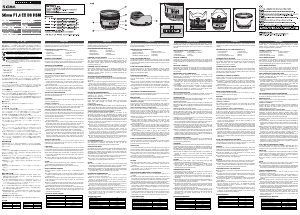


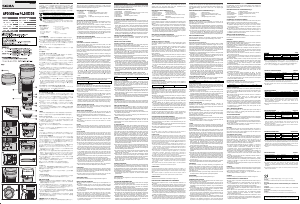
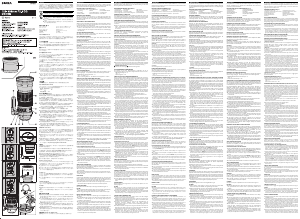
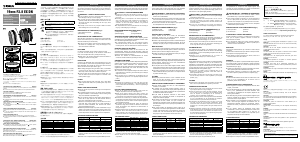
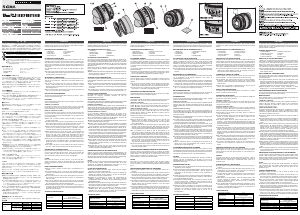
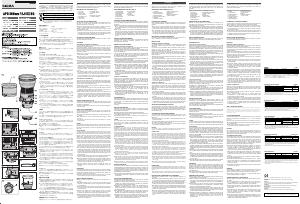
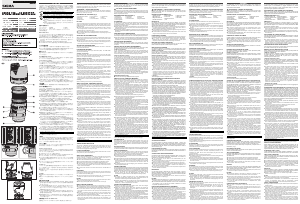

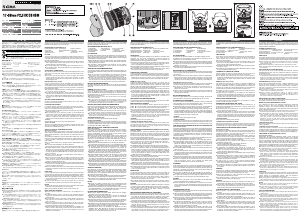
加入有关该产品的对话
您可以在这里分享您对 Sigma 50MM F1.4 EX DG HSM 摄影机镜头 的看法。 如果您有疑问,请先仔细阅读手册。 可以使用我们的联系表索取手册。